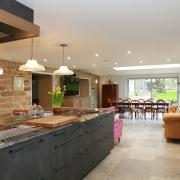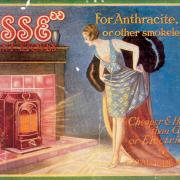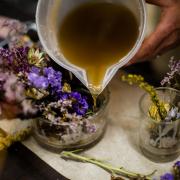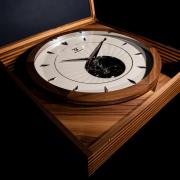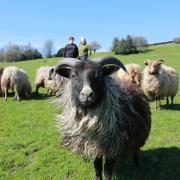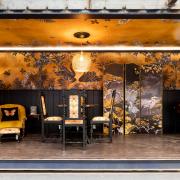For makers of fine furniture, the news that the timber from an ancient tree has become available is a dream come true. However, it can turn into a bit of a nightmare.

Two years ago Will Acland and Oliver Waters were invited over to the Leighton Hall Estate, near Carnforth in north Lancashire, to assess the remains of what became known as the Slackwood Yew. No one was sure of its age but it had been there for many centuries.
The dead tree was felled on the site of Slackwood Farm in order to make way for a striking extension that formed part of a client’s restoration scheme for their 17th century farmhouse.
Oliver, one half of the Waters & Acland team based at the Mill Yard in Staveley, said the yew looked problematic from the start. ‘The local tree surgeon tasked with felling and cutting it into useable planks had clearly had a hard time,’ he said.
‘He explained how the density of the wood and the sheer quantity of metal fragments such as old nails, lead shot and even arrow heads found within it had made it almost impossible to machine.’

After a third bandsaw blade had been destroyed he pretty much gave up. ‘This was understandable but pretty disheartening for the task that lay ahead for us,’ added Oliver.
Their brief was to season the timber and then design and make a contemporary display case and sliding door panel for the curvaceous new extension. Without clean timber this was going to be a challenge.
‘Once we had seasoned the timber we machined the surfaces of the useable sections and discovered two things. Firstly the timber was truly beautiful. The range of colour and grain pattern was remarkable with magnificent deep purple tones having formed around any ferrous metal that had been embedded within the tree.
‘Secondly the only way we were going to create substantial pieces of furniture from this timber was to take the scarce clean sections and to machine them into thin band-sawn veneers 3mm thick. These could then be used in various creative ways.’
It took some time but the result was a very happy client and a project which Oliver described as ‘a celebration of this magnificent tree.’
Myths and legends
Yew trees have a special place in the British countryside and in our psyche. They have moved poets of the stature of Alfred Lord Tennyson and, carved into longbows, they have helped us win wars.
And they’ve been part of the scenery for an awfully long time. One yew in Powys was recently confirmed as being 5,000 years old - the oldest living thing in Europe.
This was done through DNA testing – traditional ring dating is difficult because ancient trees often lose their middle sections.
Many myths surround the yew go back through Celtic and Nordic tradition and further to the Neolithic Age. The fact that a living branch can put down a new root through rotting material and the way in which apparently dead trees can regenerate means they were associated with rebirth and immortality. That may well be the reason we see so many in churchyards.




